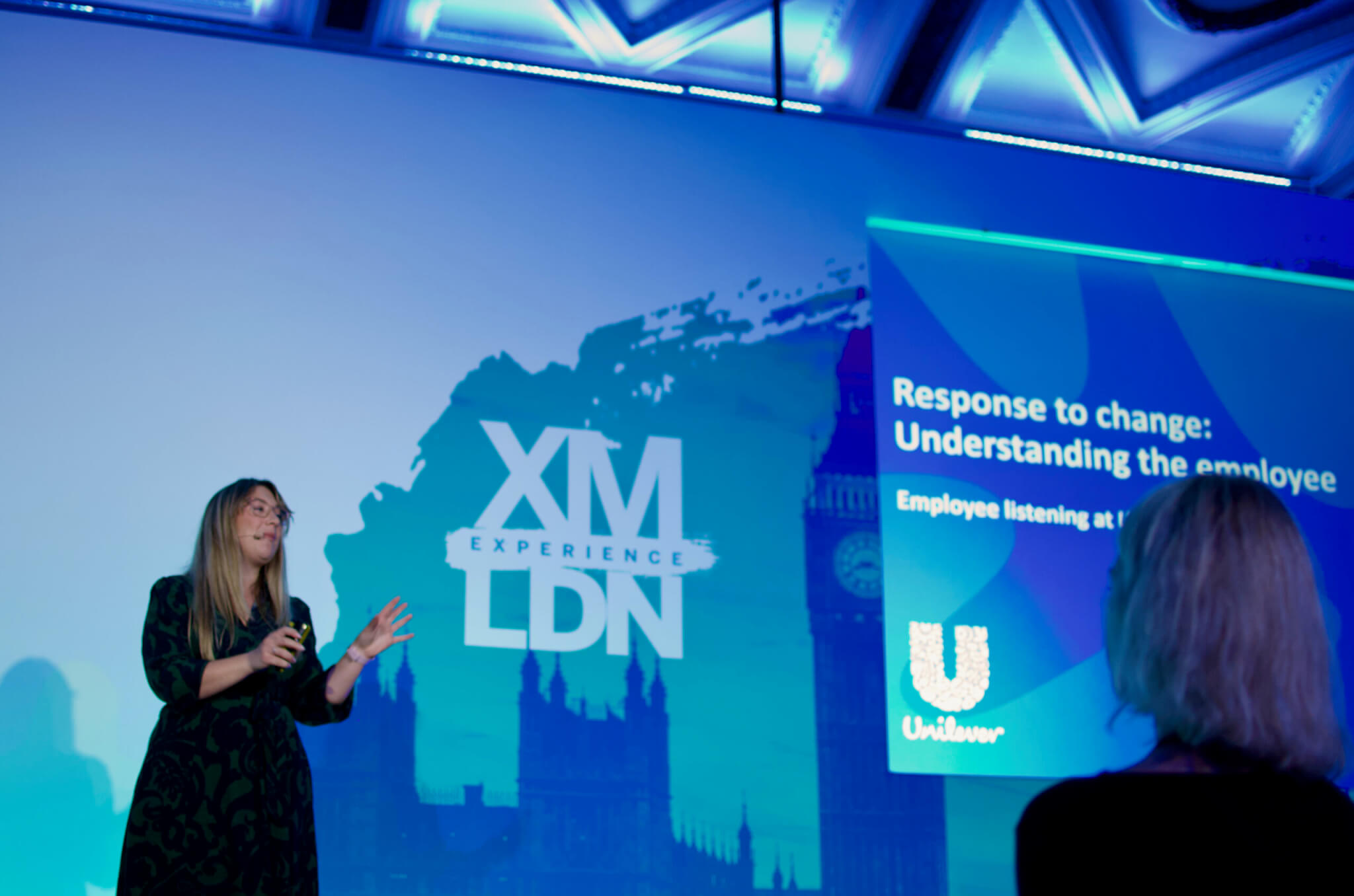
Employee Experience
How Unilever is getting to the root cause of employee uncertainty
In uncertain times, employee feedback becomes more unclear. More unpredictable. More unstructured, its root cause buried in verbatim comments rather than simple engagement scores. At Experience London, we heard from Ana Richardson - Global Employee Insights Lead - on how Unilever is using text analytics to truly understand its workforce and help managers take action.
At the start of 2022, Unilever announced changes to its organizational model to make it a simpler, more category-focused business.
From the outset it knew how important it was to make people feel listened to, understood, and that their input is acted on.
Especially in an environment where employees in every industry are feeling burned out, attrition is at near record levels, and skill shortages are everywhere.
At Unilever, they looked to Experience Management to reduce the risk.
To make sure they involved their people in the process, stayed close to what they needed, and acted quickly to make sure they kept their best people engaged and on board for the journey ahead.
They went to more frequent listening, more sophisticated analysis, and - most importantly - they delivered ready-made action plans to managers around the world.
Top 3 things we learned from Unilever
The “big picture” is made up of little pictures
Unilever knows that employee uncertainty can’t be tackled with a one-size-fits-all approach.
Why we feel uncertain is unique to region, department and even individual.
The company instituted new ways to gather people’s views, opinions and emotional responses.
In practice this meant pulsing employees more regularly and asking specific questions about the issues of today.
And by taking this experience data, running advanced text analytics, and combining with operational data, Unilever gets a granular view of what’s affecting its employees and actions it needs to take at a team level.
HR is about making ambiguity predictable
Simon Daly, one of Qualtrics’ chief employee experience strategists, spoke at London on how HR is evolving rapidly.
Now, it’s seen as a strategic partner to the business, rather than an administrative function.
That was echoed by Ana, who talked about the objective of making “ambiguity predictable” during periods of change or uncertainty.
For Unilever, that means mapping its listening program and benchmarking along a change curve.
And continually staying close to employees to understand at which points they are becoming disengaged and need greater attention.
Don’t get comfortable with middling employees
It can be tempting to ignore employees that are neither engaged or disengaged.
But having employees on the fence has a real impact upon an organization’s ability to achieve its goals.
And for HR, this group of employees presents an incredible opportunity to drive up engagement and productivity.
Unilever instead considered “neutral” as some form of disengaged, or a sign of people not feeling comfortable sharing.
Instead, Unilever is looking for people to come off the fence, in order to better understand the true feelings of all employees.
Get to know your employees better with Qualtrics XM Discover.